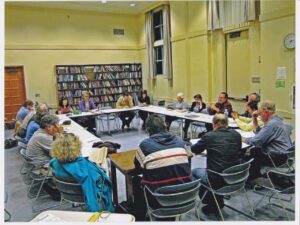Many of those who keep a close eye on the news have become rather blasé about this country’s political assassinations.
Oh, another hit on an ANC politician? Onto the next headline, probably about State Capture and mass looting, without batting an eyelid.
It’s a sad indictment on the state of our political system that we can hardly muster shock any longer, but it’s a different story for those watching from abroad.
Take the New York Times and their latest article focusing on SA – “Hit Men and Power: South Africa’s Leaders Are Killing One Another”.
Having already laid bare the dirty deeds of deputy president David Mabuza, and gone to town on SARS, let’s see what they have to say about the assassinations:
Political assassinations are rising sharply in South Africa, threatening the stability of hard-hit parts of the country and imperiling Mr. Mandela’s dream of a unified, democratic nation.
But unlike much of the political violence that upended the country in the 1990s, the recent killings are not being driven by vicious battles between rival political parties.
Quite the opposite: In most cases, A.N.C. officials are killing one another, hiring professional hit men to eliminate fellow party members in an all-or-nothing fight over money, turf and power, A.N.C. officials say…

After nearly 25 years in power, party members have increasingly turned to fighting, not over competing visions for the nation, but over influential positions and the spoils that go with them.
The death toll is climbing quickly. About 90 politicians have been killed since the start of 2016, more than twice the annual rate in the 16 years before that, according to researchers at the University of Cape Town and the Global Initiative Against Transnational Crime.
Let that number sink in – 90 politicians have been killed in under three years.
You can get killed for just about anything these days:
The recent assassinations cover a wide range of personal and political feuds. Some victims were A.N.C. officials who became targets after exposing or denouncing corruption within the party. Others fell in internal battles for lucrative posts. In rural areas — where the party has a near-total grip on the economy, jobs and government contracts — the conflict is particularly intense, with officials constantly looking over their shoulders.
KwaZulu-Natal is the deadliest province of all, with 80 ANC officials having been killed between 2011 and 2017 alone.
This has led to some very jaded politicians:
“It was better before we attained democracy, because we knew the enemy — that the enemy was the regime, the unjust regime,” said Mluleki Ndobe, the mayor of the district where Mr. Magaqa and five other A.N.C. politicians have been assassinated in the past year.
“Now, you don’t know who is the enemy,” he said.
If you’re wondering why the ANC hasn’t done more to stamp out these killings, get ready for a familiar refrain:
The government’s inaction reflects the A.N.C.’s inability — or unwillingness — to stop the internal warfare because it could expose the extent of corruption and criminality in its ranks, current and former party officials say.
“These allegiances go all the way to the top of the party,” said Makhosi Khoza, a prominent former A.N.C. politician who works at OUTA, an organization fighting graft. “That’s why the A.N.C. is not interested in this, no matter how many murders there are.”
The New York Times article wraps up with a rather jarring passage, focusing on the mother of assassinated former ANCYL secretary general Sindiso Magaqa:
In an empty, roofless room, wrapped in heavy blankets against the cold, Mr. Magaqa’s mother spoke about the promises A.N.C. officials made after her son died. His Mercedes sat in a corner of the backyard, riddled with bullets.

She was still waiting for the A.N.C. to solve the killing, to take care of her son’s four children, or even to fix his broken cars.
“Especially the Mercedes,” she said. “It’s destroyed our family, especially me. Each and every day, I see it, and everything comes back.”
Just another series of empty, broken promises.
You can read the full New York Times article here.
[source:newyorktimes]





